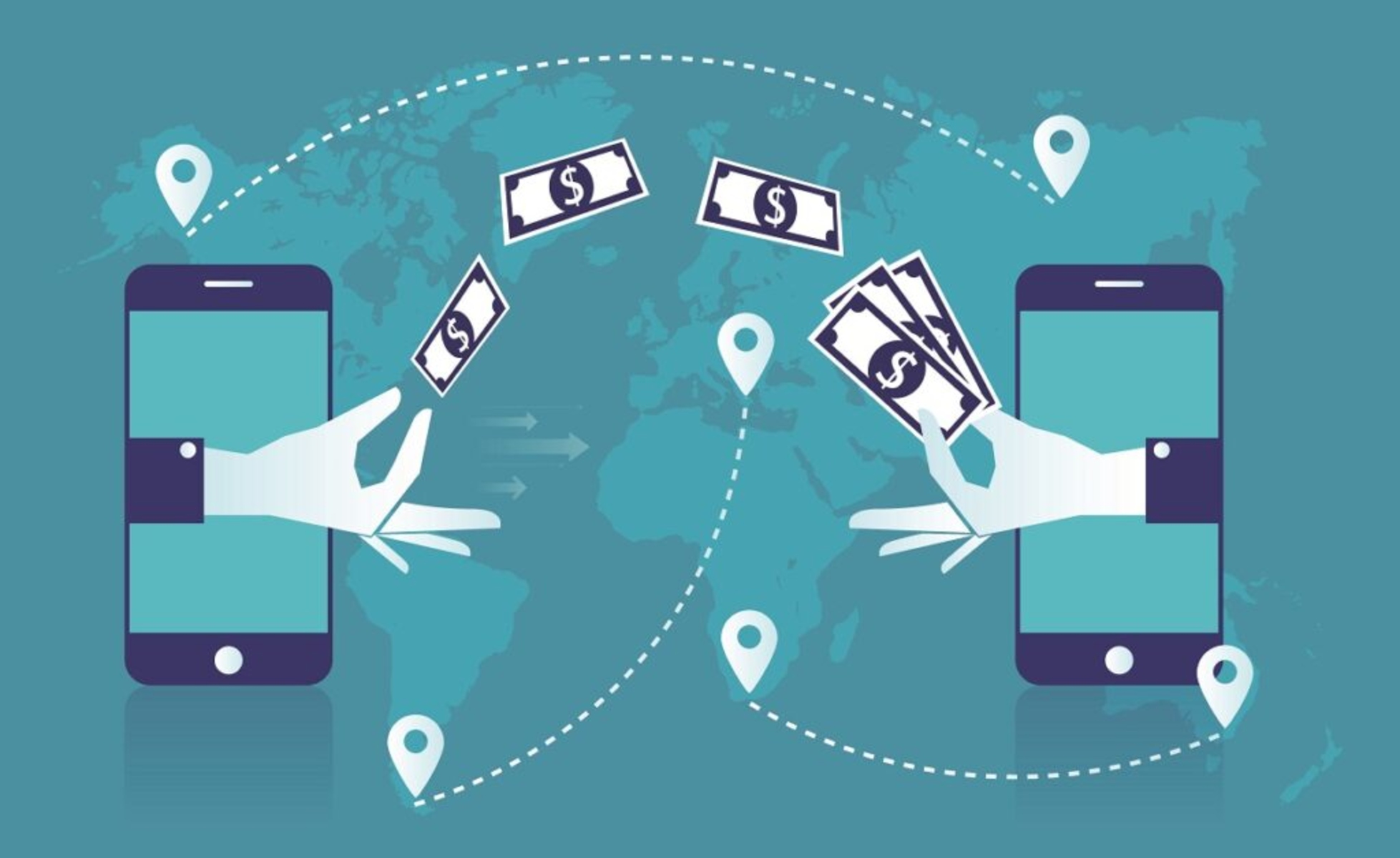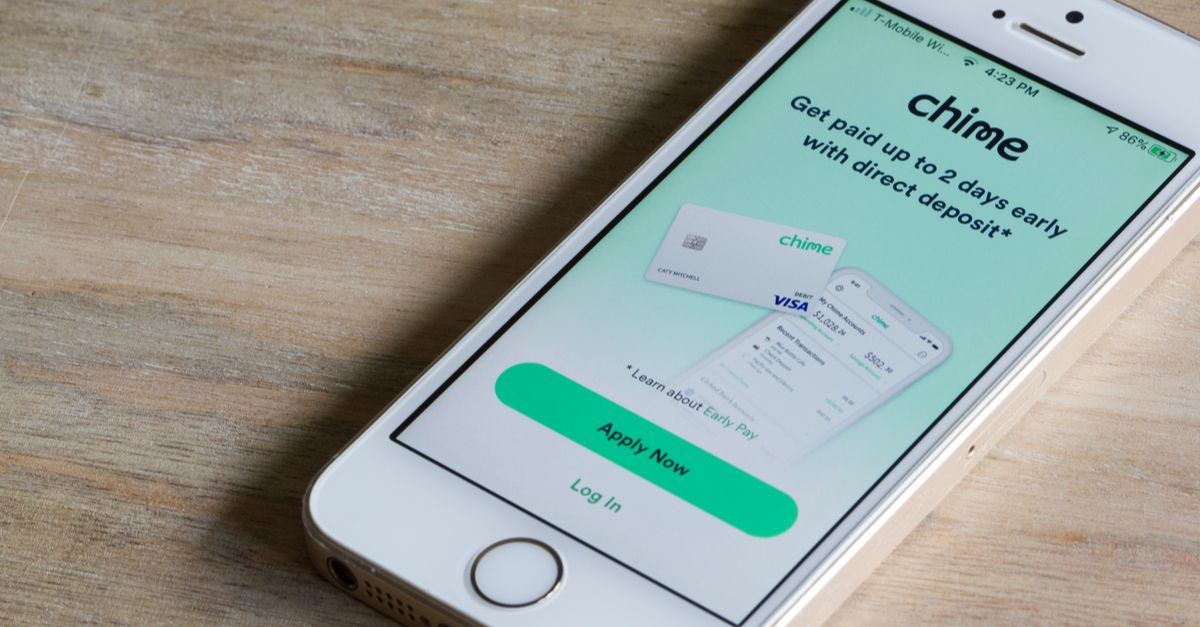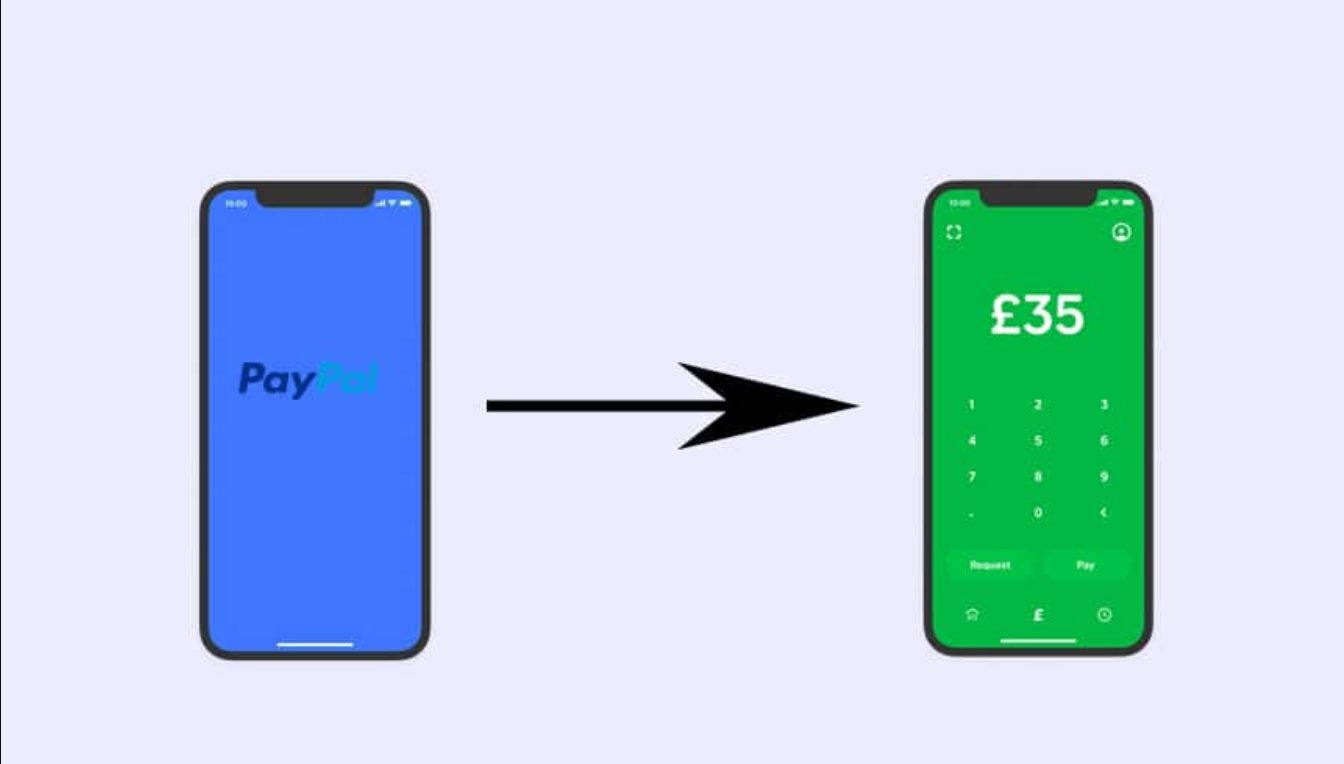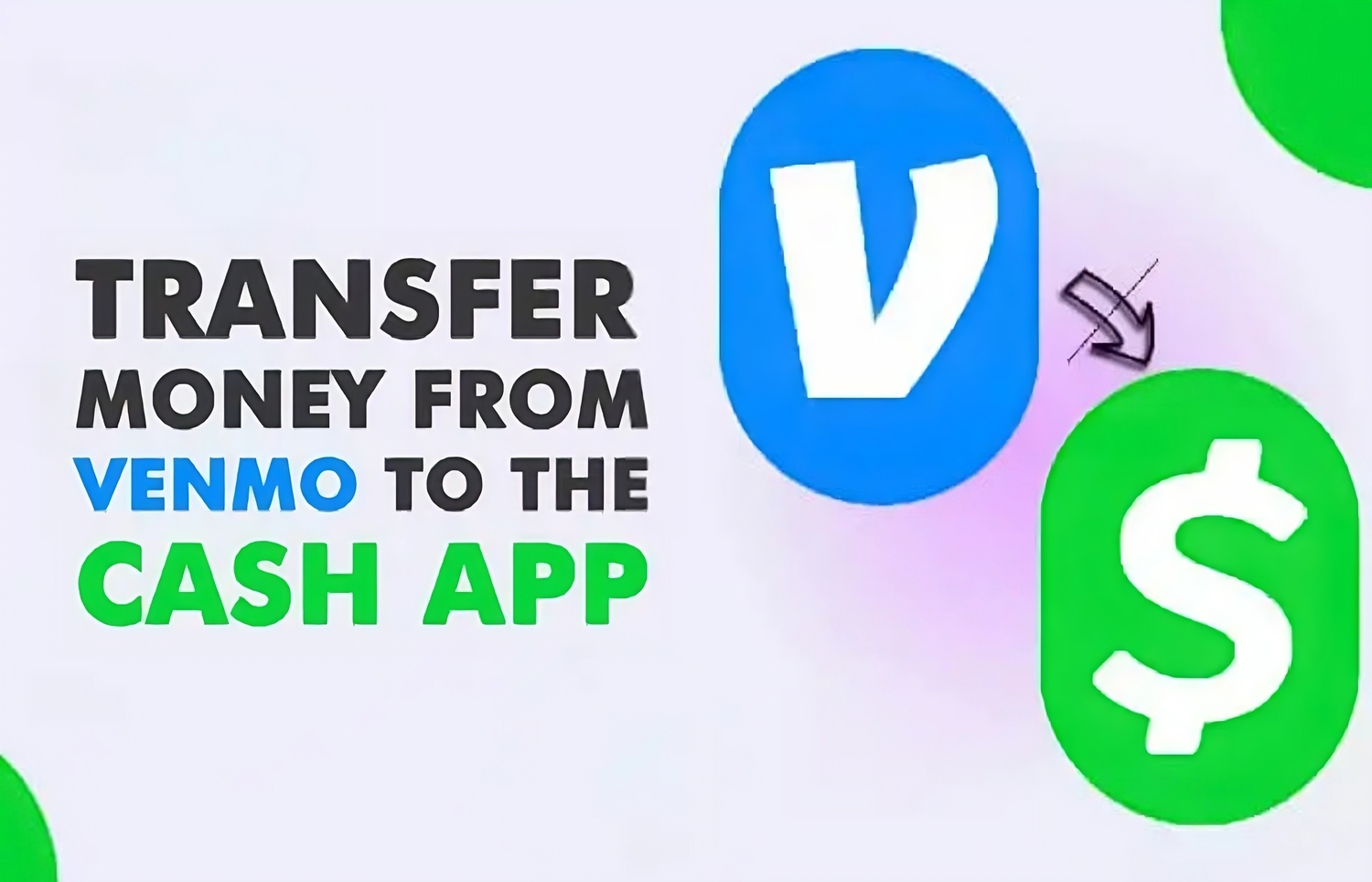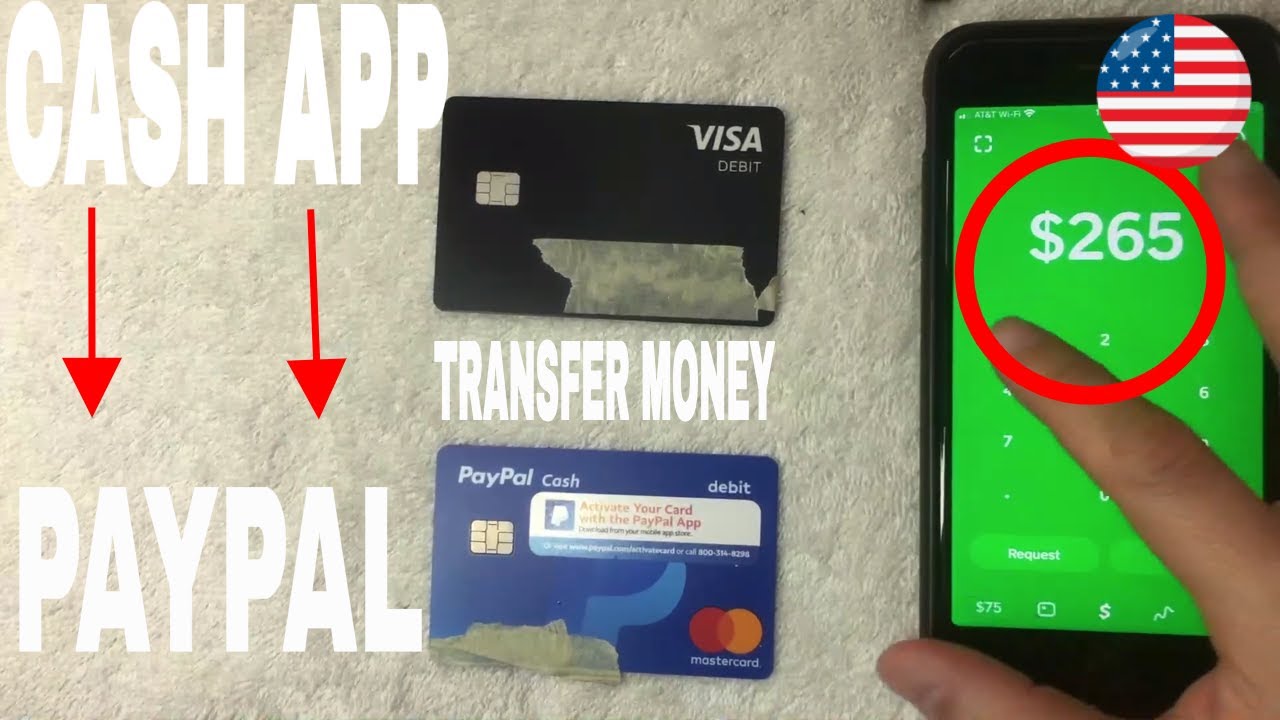Introduction
Money transfer apps have revolutionized the way people send and receive money in today’s digital age. With just a few taps on their smartphones, users can instantly transfer funds to friends, family, or businesses, eliminating the need for traditional methods like cash or checks. These apps have gained popularity and disrupted the traditional banking industry by providing a convenient and efficient way to handle financial transactions.
Money transfer apps, also known as peer-to-peer (P2P) payment apps, utilize innovative technology to facilitate secure and fast money transfers. They have become an integral part of our daily lives, empowering individuals and businesses to manage finances at their fingertips. Whether you want to split a restaurant bill with friends, pay the rent, or send money to a loved one in a different country, money transfer apps offer a seamless and user-friendly experience.
Through money transfer apps, users can link their bank accounts or credit cards to the app, which becomes a digital wallet. This allows users to store money digitally and use it for various transactions. The apps typically offer different features such as person-to-person payments, bill splitting, and even some advanced options like international transfers or investment functionalities.
Aside from the convenience, money transfer apps offer numerous benefits to users. They provide instant transfers, eliminating the delays associated with traditional methods like checks or wire transfers. Additionally, many apps incorporate social features, allowing users to communicate or send messages along with the transactions. These apps also provide transparency, with detailed transaction histories and notifications, enabling users to keep track of their financial activities easily.
In this article, we will explore how money transfer apps work, examine the benefits they offer, highlight the most popular apps in the market, compare their features, and address the security and privacy concerns associated with using these apps. By the end, you will have a comprehensive understanding of money transfer apps and the factors to consider when choosing the right app for your individual needs.
Definition of Money Transfer Apps
Money transfer apps, also known as peer-to-peer (P2P) payment apps, are digital platforms that allow users to send, receive, and manage their money electronically. These apps leverage mobile technology to provide a convenient and secure way of conducting financial transactions.
These apps serve as intermediaries between users, facilitating the transfer of funds from one account to another. Users can link their bank accounts, credit cards, or digital wallets to the app, enabling them to store and transfer money digitally.
Money transfer apps have gained immense popularity due to their ease of use and wide range of functionalities. In addition to facilitating person-to-person payments, these apps often offer features like bill splitting, recurring payments, and the ability to make purchases from merchants who accept payments through the app.
One of the defining characteristics of money transfer apps is the instant transfer capability. Users can send and receive money in real-time, eliminating the need for manual processes like writing checks or visiting physical banking institutions. This speed and convenience make money transfer apps a popular choice for individuals and businesses alike.
Moreover, money transfer apps have expanded their services beyond domestic transactions. Many apps now offer international transfer options, allowing users to send money across borders efficiently and securely. This has made it easier for individuals to support family members abroad or participate in global business transactions.
While money transfer apps primarily operate through mobile applications, some platforms also offer web-based interfaces that allow users to access their accounts and manage transactions from desktop or laptop devices.
It’s important to note that money transfer apps are not the same as mobile banking apps offered by traditional financial institutions. While mobile banking apps focus on providing account management and banking services, money transfer apps are specifically designed to facilitate peer-to-peer payments and digital money transfers.
Overall, money transfer apps have transformed the way people handle their finances and have become a cornerstone of the digital economy. With their user-friendly interfaces, instant transfers, and expanding functionalities, these apps have made financial transactions more efficient and convenient for users worldwide.
How Do Money Transfer Apps Work?
Money transfer apps operate by leveraging technology to securely facilitate the transfer of funds between users. While the specific functionalities may vary depending on the app, the general process remains similar across different platforms. Here’s a breakdown of how money transfer apps work:
- Registration and Account Setup: Users need to download the app from their respective app stores and create an account. This typically involves providing personal details, verifying identity, and linking a bank account or credit card to the app.
- Adding Funds: After setting up the account, users can add funds to their digital wallets by linking their bank accounts or credit cards. Some apps also allow users to establish recurring transfers to automatically add money to their wallets at specified intervals.
- Initiating a Transfer: To send money to another user, the sender must enter the recipient’s information, such as their mobile number or email address, or select a contact from their phone’s contact list. The sender then specifies the amount to be transferred.
- Verification and Authorization: Before proceeding with the transfer, the app verifies the sender’s identity and confirms that sufficient funds are available in the sender’s account. Depending on the app, this may involve password authentication, biometric verification, or other security measures.
- Transfer Execution: Once authorized, the app initiates the transfer by debiting the sender’s account and crediting the recipient’s account. This process typically happens in real-time, ensuring instant transfers.
- Confirmation and Notifications: Both the sender and recipient receive confirmation of the transaction, often in the form of a notification within the app and an email or SMS. These notifications include details such as the transaction amount, date, and the sender’s and recipient’s information.
- Transaction History: Money transfer apps provide users with a transaction history log, allowing them to track and review past transfers. This feature enables users to keep a record of their financial activities.
Some money transfer apps offer additional features, such as requesting payments, splitting bills amongst multiple users, or integrating with other services like online shopping platforms. These added functionalities enhance the user experience and provide greater flexibility in managing financial transactions.
It’s worth noting that money transfer apps prioritize security and data protection. They employ encryption technologies to safeguard users’ personal and financial information, ensuring that sensitive data is transmitted securely. Additionally, many apps provide authentication options, such as PIN codes, fingerprints, or facial recognition, to enhance the security of the transactions.
Overall, money transfer apps simplify the process of transferring funds by leveraging technology and providing users with a seamless and efficient way to handle their financial transactions.
Benefits of Using Money Transfer Apps
Money transfer apps offer several advantages over traditional payment methods, making them a popular choice for individuals and businesses alike. Here are some key benefits of using money transfer apps:
- Convenience: Money transfer apps provide users with the convenience of transferring funds anytime, anywhere. Whether you’re out with friends and need to split a bill or want to send money to a family member in another country, these apps make it easy to handle transactions with just a few taps on your smartphone.
- Instant Transfers: With money transfer apps, the days of waiting for checks to be deposited or wire transfers to go through are over. These apps enable real-time transfers, allowing the recipient to access the funds almost immediately. This speed is especially beneficial for urgent or time-sensitive transactions.
- Cost-Effective: Money transfer apps often offer low or even no transaction fees for basic transfers, making them a cost-effective option compared to traditional methods like wiring money or sending checks. Additionally, some apps offer competitive exchange rates for international transfers, which can result in significant savings.
- Flexibility: Money transfer apps provide users with flexibility when it comes to managing their finances. Users can link multiple bank accounts or credit cards to their app, giving them the freedom to choose which account to use for each transaction. This flexibility simplifies money management and allows for better control over personal finances.
- Enhanced Security: Money transfer apps prioritize the security of financial transactions. They utilize advanced encryption technologies to protect users’ personal and financial information, reducing the risk of fraud or unauthorized access. Many apps also offer additional security features such as biometric authentication or two-factor authentication, providing users with peace of mind.
- Transaction History and Tracking: Money transfer apps maintain a detailed transaction history, allowing users to track and review their past transfers. This feature aids in keeping records, managing budgets, and monitoring personal or business expenses. Users can easily access their transaction history within the app, eliminating the need for manual record-keeping.
- Integration with Other Services: Many money transfer apps integrate with other platforms or services. For example, some apps allow users to make payments or purchases directly within the app, eliminating the need to switch between different applications. These integrations provide a seamless and all-in-one financial management experience.
By utilizing money transfer apps, users can enjoy the convenience, speed, and cost-effectiveness of digital transactions. These apps have revolutionized the way we handle our finances, making it easier than ever to send and receive money securely and efficiently.
Popular Money Transfer Apps
There are several popular money transfer apps available in the market today, each offering its own features and functionalities. Let’s take a look at some of the well-known money transfer apps:
- PayPal: PayPal is one of the pioneers in online payments and remains one of the most widely used money transfer apps globally. It allows users to send and receive money, make online purchases, and even transfer funds internationally.
- Venmo: Venmo is a peer-to-peer payment app that integrates social media-like features. Users can easily split bills, request payments, and share transactions with friends or contacts. Venmo also provides a social feed, allowing users to comment and like transactions.
- Zelle: Zelle is a popular money transfer app that offers fast and secure transfers directly between bank accounts within participating financial institutions. It provides a convenient way to send money to friends and family with just a few clicks.
- Cash App: Cash App, developed by Square Inc., allows users to send and receive money digitally. It offers a user-friendly interface and features like a Cash Card that enables users to make purchases directly from their Cash App balance.
- Google Pay: Google Pay allows users to send or receive money, pay bills, and make purchases both online and in stores using their smartphones. It provides a seamless integration with other Google services and offers rewards for completing transactions.
- Apple Pay: Apple Pay is a payment service exclusively available to Apple device users. It allows users to make in-store, online, and person-to-person payments securely using their Apple devices. Apple Pay integrates with the user’s Apple Wallet for easy access to payment options.
- TransferWise: TransferWise focuses primarily on international money transfers, providing users with competitive exchange rates and low transfer fees. It offers a transparent and user-friendly interface, making it a popular choice for individuals and businesses with international transfer needs.
These are just a few examples of popular money transfer apps, but there are many more available in the market. The choice of app depends on factors such as individual preferences, geographical availability, and specific features required.
It’s important to research and compare different money transfer apps to find the one that best suits your needs. Consider factors such as fees, transfer limits, security measures, customer reviews, and additional features to make an informed decision.
Remember to always download money transfer apps from reputable sources and ensure that the app is legitimate to ensure the security of your financial transactions.
Comparison of Money Transfer Apps
When choosing a money transfer app, it’s essential to compare the features and functionalities offered by different platforms. Here are some key factors to consider when comparing money transfer apps:
- User Interface: Evaluate the user interface of each app to ensure it is intuitive and easy to navigate. A user-friendly interface enhances the overall experience and simplifies the process of sending and receiving money.
- Supported Platforms: Check if the app is available for your specific device’s operating system, such as iOS or Android. It’s crucial to choose an app that is compatible with your device to ensure seamless usage.
- Transfer Speed: Consider the speed at which transfers are processed. Some apps provide instant transfers, while others may take a few business days to complete. Choose an app that aligns with your transfer time requirements.
- Transaction Limits: Check the maximum and minimum transaction limits imposed by each app. Ensure they align with your anticipated transfer amounts to avoid any limitations or restrictions.
- International Transfer Options: If you require international transfers, verify whether the app supports such transactions and inquire about the associated fees and exchange rates. Some apps specialize in international transfers and may offer better rates than others.
- Transaction Fees: Look into the fees charged for different types of transactions, such as sending money, receiving money, or withdrawing funds. Compare the fee structures of various apps to find the most cost-effective option for your needs.
- Security Measures: Prioritize apps with robust security measures, such as encryption, two-factor authentication, and fraud monitoring. Security should be a top concern to protect your financial information and transactions.
- Customer Support: Research the availability and quality of customer support provided by each app. Look for options like live chat, phone support, or email assistance to ensure you can easily resolve any issues or get assistance when needed.
- Additional Features: Consider any additional features provided by the app, such as bill-splitting, transaction history tracking, or integration with other services. These features can enhance your overall experience and make managing your finances more convenient.
By comparing these factors across different money transfer apps, you can select the one that best aligns with your specific requirements and preferences. Keep in mind that your priorities may differ depending on whether you primarily require domestic transfers, international transfers, or a combination of both.
It’s advisable to read user reviews and consider recommendations from trusted sources to gain insights into the user experience and reliability of each app. Ultimately, the choice of a money transfer app should be based on your individual needs, convenience, and the level of trust you have in the platform.
Security and Privacy Concerns with Money Transfer Apps
While money transfer apps offer convenience and efficiency, it’s important to be aware of the security and privacy concerns associated with these platforms. Here are some key considerations:
- Data Protection: Ensure that the app you choose implements robust encryption techniques to protect your personal and financial information. Look for apps that adhere to industry standards and regulatory guidelines for data security.
- Authentication and Authorization: Check for features like two-factor authentication or biometric verification, such as fingerprint or facial recognition. These features add an extra layer of security, ensuring that only authorized individuals can access and initiate transactions.
- Fraud Prevention: Money transfer apps should have measures in place to detect and prevent fraudulent activities. Look for features like transaction monitoring, suspicious activity alerts, and secure login protocols to minimize the risk of unauthorized access.
- Phishing and Scams: Stay vigilant and be cautious of phishing attempts and scams. Be wary of sharing personal information or clicking on suspicious links or emails. Legitimate money transfer apps will never request sensitive information outside of their secure platforms.
- Privacy Policies: Review the privacy policies of money transfer apps to understand how they collect, use, and store your data. Ensure that the app has adequate privacy controls in place and does not share your information with third parties without your consent.
- Public Wi-Fi Risks: Avoid using money transfer apps on public Wi-Fi networks, as they may not be secure. Public networks can be susceptible to hacking attempts and data breaches. It’s best to use secure, password-protected Wi-Fi or your mobile data network for financial transactions.
- App Updates: Keep your money transfer app updated with the latest version released by the provider. App updates often contain security patches and bug fixes to address any vulnerabilities that may have been discovered.
- Lost or Stolen Devices: Take precautions to secure your device and consider enabling features like remote locking or wiping in case your device is lost or stolen. Set a strong PIN or password to protect unauthorized access to your apps and sensitive information.
- Research App Reputation: Before choosing a money transfer app, research its reputation in terms of security and privacy. Read reviews and consider the app’s track record regarding data breaches or security incidents.
It’s important to remember that while money transfer apps prioritize security, no system is entirely foolproof. It’s essential to exercise caution, use strong passwords, avoid sharing sensitive information, and regularly monitor your financial transactions for any suspicious activity.
By following these security practices and being proactive in protecting your personal and financial information, you can use money transfer apps with confidence and ensure a secure and seamless digital payment experience.
Conclusion
Money transfer apps have transformed the way we handle financial transactions by offering convenience, speed, and enhanced security. These apps have become an integral part of our digital lives, allowing us to send and receive money with just a few taps on our smartphones.
Throughout this article, we explored the definition of money transfer apps and how they work, highlighting their benefits, popular options in the market, and the importance of comparing different apps based on various factors. We also discussed the security and privacy concerns associated with using these apps and provided recommendations to mitigate potential risks.
Money transfer apps offer a range of advantages, including instant transfers, cost-effectiveness, flexibility, and transparent transaction histories. They provide a convenient and efficient means of managing finances, whether for personal use or business transactions.
When choosing a money transfer app, it’s crucial to consider factors such as user interface, transfer speed, transaction fees, security measures, and additional features. By comparing these aspects, you can select the app that aligns best with your specific needs and preferences.
While money transfer apps prioritize security, it’s essential to remain vigilant and adopt best practices to protect your personal and financial information. Be mindful of phishing attempts, use secure networks, keep your app updated, and take precautions to secure your devices.
In conclusion, money transfer apps have revolutionized the way we handle money by providing a user-friendly, efficient, and secure means of transferring funds. By leveraging these apps, we can enjoy the convenience of instant transfers, track our transactions easily, and navigate the digital economy with confidence.







